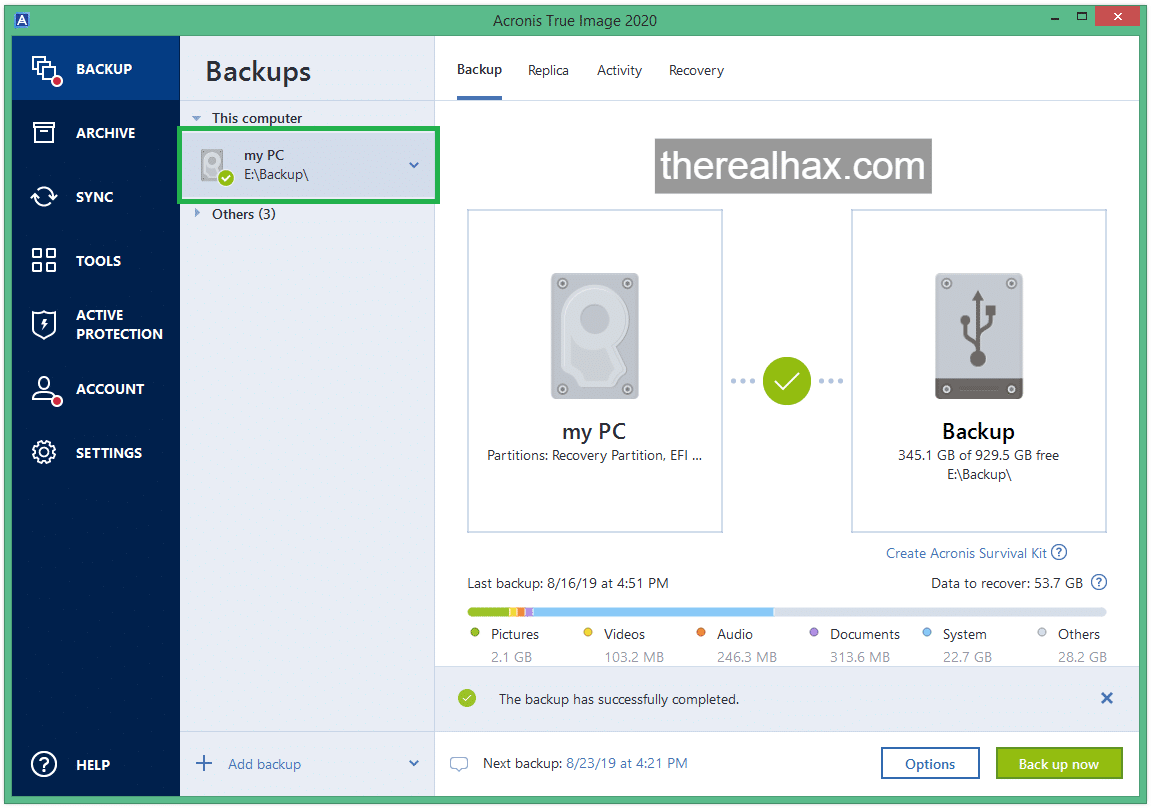

- #Acronis true image hd bootable usb mac os x
- #Acronis true image hd bootable usb update
- #Acronis true image hd bootable usb archive
- #Acronis true image hd bootable usb software
Just select the operating system that you want to boot and wait for the boot process to complete.

Ventoy will pick these up automatically when you boot it to provide you with a selection menu. Once the initial installation has been done, place ISO images on the partition. The application creates a FAT and an exFAT partition on the device. Ventoy formats the entire disk and erase all content on it but warns about it.
#Acronis true image hd bootable usb update
Not that Windows may throw a Smartscreen warning when you execute it.Īll it takes then is to select an USB device using the device selector at the top and to hit the Update button to start the process.
#Acronis true image hd bootable usb archive
Just download the application archive from the developer website and extract it.

Installation is pretty straightforward on Windows. Updating of ISO images is a breeze as well as you simply replace an ISO image with another. It is possible to place Windows and Linux images on the device to boot from them whenever the need arises. You can transfer multiple ISO images to the device once the Ventoy structure has been created on the device using an installer. The program supports multiple ISO images that you can place on a USB device and uses GRUB as the boot manager. Instead of extracting an ISO image, it allows you to place the actual ISO images on the USB device so that you may boot from them directly.
#Acronis true image hd bootable usb software
Otherwise, your rescue media may not work properly.Ventoy is a new software application for Linux and Windows that does things a bit differently.
#Acronis true image hd bootable usb mac os x
We recommend that you create a new rescue media every time you upgrade your Mac OS X to a newer version. Select the drive that you want to make bootable. The Acronis Media Builder window opens.In the File menu, click Create Rescue Media:.Note that CD and DVD media are not supported. For example, you can use an external hard drive or a USB flash drive. The drive must have 4 GB (or more) of free space. Connect a removable drive to your Mac.The bootable media can be only created if the Recovery partition is present on the machine. (!) We strongly recommend creating a bootable media immediately after the first backup if the operating system crashes, the only way to restore it is restoring from the bootable media. Mark the checkbox "Verify disc after burning" and then click the Burn button to start writing the media: When the download finishes, right-click the downloaded file and select "Burn disc image":Ħ. Save the ISO file somewhere on the computer. Locate the link "Bootable Media ISO" on the download page and click it to start the correct download:ĥ. If a download starts automatically, cancel it. Click Downloads in the Acronis True Image section:Ĥ. Open a web browser and sign into your account at :ģ. You cannot create a bootable USB thumb drive this way.Ģ. The only restriction that exists in this case is that the bootable media as an ISO image can be burnt only to a CD/DVD disc. You can always download a Bootable Media ISO image file from your account web page on any computer and create the bootable media even on a computer where Acronis True Image is not installed. Start the product and click the Tools sign -> Rescue Media Builder:.Attach a USB flash drive to your computer or insert a CD/DVD.If you have Acronis True Image installed, create the Bootable Media using the Rescue Media Builder. You can create a Bootable Media using the Rescue Media Builder in the program interface, or using Bootable Media ISO image. Follow these instructions to create a bootable media. You can create a rescue bootable media - a standalone version of Acronis True Image that you can use to boot a crashed machine or a machine without any operating system and restore an image of your system.


 0 kommentar(er)
0 kommentar(er)
